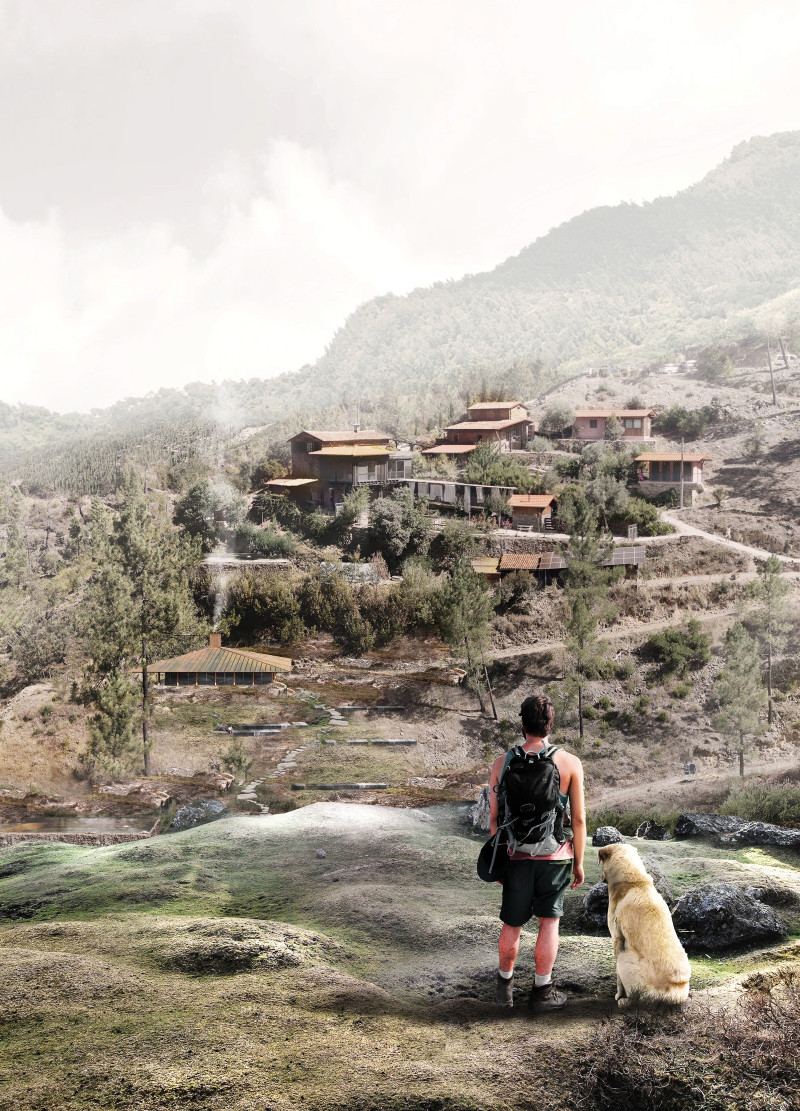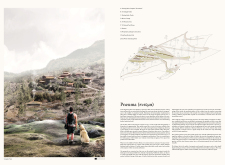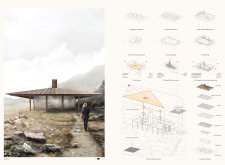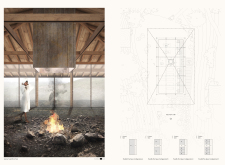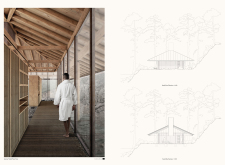5 key facts about this project
Located in Vale de Moses, the design emphasizes the relationship between people and the environment. It focuses on creating a living space that is both flexible and adaptable. Instead of using several fixed cabins, the proposal introduces a large cover that functions as a versatile area, encouraging various uses and fostering a sense of community.
Design Concept
The central idea revolves around flexibility, allowing the space to respond to different needs. The expansive structure is created to have minimal effects on the surrounding landscape, promoting a connection with the natural terrain. This design prioritizes a free space, one that can change and adapt, highlighting the importance of user control within the environment.
Materials and Aesthetics
The design incorporates a glass volume, which is key to managing light and controlling solar exposure. This choice not only adds to the visual appeal but also helps maintain comfortable temperatures year-round. The pitched roof is reinterpreted based on local architectural styles, establishing a visual link to the cultural context while fulfilling practical roles in collecting sunlight for energy use.
Sustainability Features
Sustainability plays a significant role in the project, with a focus on efficient water management. The design includes rainwater collection pools and a greywater cleansing pond. These features support water conservation and represent a commitment to creating a self-sufficient habitat that works in harmony with nature. Such systems enhance the interaction between the built environment and local ecosystems.
Functional Elements
A noteworthy element is the chimney, which serves a dual purpose. In summer, it acts as a solar collector, while in winter, it functions as a firepit. This aspect reflects a focus on efficiency and comfort, allowing the structure to adapt to changing weather conditions. The thoughtful design of these functional elements emphasizes how architecture can promote a deeper connection to the surrounding landscape.


